ROOM: The Space Journal is one of the major magazines on space exploration, technology and industry. At ROOM, we share a common goal – promotion of peaceful space exploration for the benefit of humankind, all while bringing you incisive articles on an array of current topics. Our authors include analysts and industry leaders from all over the world, which lets us bring you timely and comprehensive information about kepler exoplanet candidates.
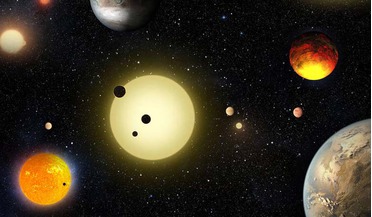 11 May 2016
Kepler scientists announce a major increase in confirmed exoplanet numbers
11 May 2016
Kepler scientists announce a major increase in confirmed exoplanet numbers
... transiting planet. So far, using this method, Kepler scientists have identified about 4700 exoplanet ‘candidates’ and have validated about 1000 of them as actual exoplanets. Candidate planets at the time of labelling, are just that – candidates – and in order to weed out imposter...
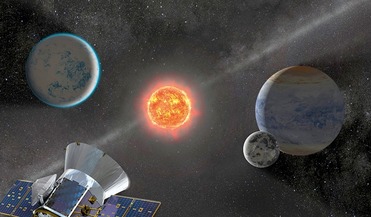 April 2019
Scanning the skies for exoplanets
April 2019
Scanning the skies for exoplanets
...that will be 400 times larger than that covered by Kepler. Like Kepler, TESS will search for exoplanets by detecting the fractional dip in a star’s brightness as an orbiting exoplanet passes by, a technique known as the transit method.... their host stars in 13 days or less; these are considered short orbital period exoplanets. Conversely, Kepler was adept at finding exoplanets with orbital periods from 10 days up to a few hundred days, a feature ...
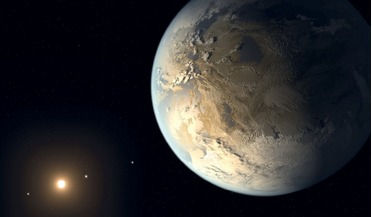 August 2018
Exoplanet census promises radical discoveries
August 2018
Exoplanet census promises radical discoveries
... police radar guns to detect speeding cars. Figure 1: The sensitivity regions of the Kepler transit survey (in red) and the WFIRST exoplanet microlensing survey (in blue) are compared to the orbits of the planets in our ... planet or star in systems with more than one host star. The combination of the WFIRST exoplanet microlensing survey and Kepler’s transit survey will provide a complete statistical census of planets at all separations. This is the...
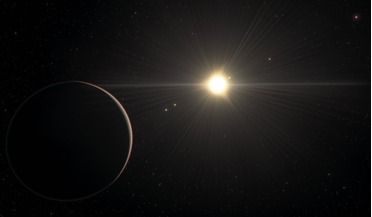 25 January 2021
Unique six-exoplanet system challenges theories of how planets form
25 January 2021
Unique six-exoplanet system challenges theories of how planets form
... around the brightest dwarf stars. To date, the planet hunter has found 98 confirmed exoplanets and 2453 candidates waiting to be verified. Exoplanet candidates which appear the most promising are put into the TESS Objects of Interest (TOI) Catalogue...
 November 2018
How many people does it take to colonise an exoplanet?
November 2018
How many people does it take to colonise an exoplanet?
... Located at 4.2 light years (40,000 billion km), Proxima Centauri b is almost an ideal destination - as far as exoplanets go. But while this distance may be small by astronomical standards, it remains utterly vast on the human scale. The...not a strict, definitive number for colonisation projects. Artist’s concept of the surface of TRAPPIST-1f, an exoplanet about 40 light years from Earth. Cows in space? Sending a ship laden with frozen embryos ...
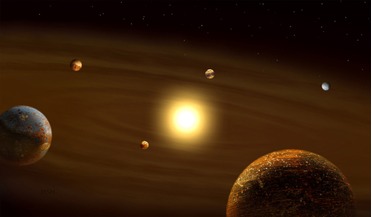 27 July 2019
Hundreds of new planet candidates detected by Kepler
27 July 2019
Hundreds of new planet candidates detected by Kepler
...exoplanet discovery. Kepler’s K2 mission comprised of 19 ‘campaigns,’ lasting around 80 days each. These new discoveries were all extracted from data collected on 152,865 stars during its first eight campaigns. A total of 818 transiting planet candidates... based on data from the multi-planet systems, most if not all of the candidates will be actual exoplanets once follow up investigations are complete. One of the interesting aspects of Kruse and ...
 24 November 2021
Astronomers discover more than 350 possible new exoplanets
24 November 2021
Astronomers discover more than 350 possible new exoplanets
... being examined for signs of potential habitable exoplanets. However, because of the problems Kepler experienced, scientists have not been able to use the same automated processes used to find transiting planetary candidates during its first mission as they...
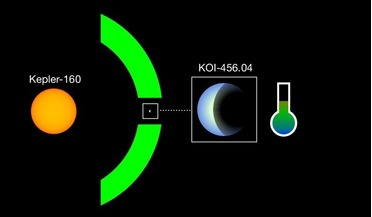 05 June 2020
Exciting exoplanet find around sun-like star
05 June 2020
Exciting exoplanet find around sun-like star
...is not new. It was discovered around ten years ago, followed by the confirmation of two exoplanets, called Kepler-160b and Kepler-160c, four years later. Both of these planets though are substantially bigger than Earth and in...– some of the Earth’s most powerful ground-based telescopes might be able lend a hand in validating this candidate. Otherwise the team will have to wait for the launch of PLATO in 2026 to corroborate their findings. Developed...
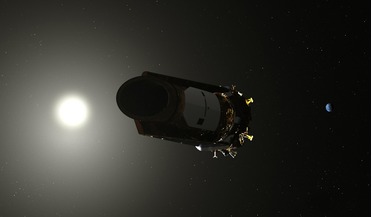 19 November 2018
Kepler officially retires after receiving final "goodnight" commands
19 November 2018
Kepler officially retires after receiving final "goodnight" commands
... outside our Solar System while identifying many more planet candidates, but it also helped kick-start an entirely new and robust field of research. "Kepler has wildly exceeded all our expectations and paved the.... As the spacecraft needs three functioning wheels to continally monitor a star’s brightness for signs of Earth-sized exoplanets, its field-of-view had to be switched roughly every three months to compensate for the mechanical glitch. The...